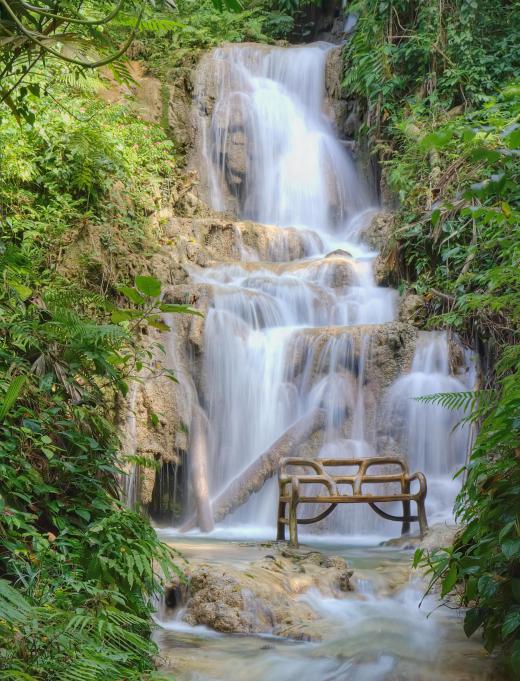A hydraulic jump is an incident where quickly moving fluid suddenly jumps up into the air. It does this in the transition from fast to slow fluid movement. In technical terms, it is when the water movement changes from supercritical to subcritical, which is when something with a high level of critical mass meets lower critical mass. A hydraulic jump will often happen if there is something downstream which prevents the flow of water.
It is common to find hydraulic jumps in bodies of water with open channel flow. This is a condition where the fluid is running down a conduit with sufficient open air so that gravity can act on the water flow. Jumps do not tend to be found in pipe flow or constricted areas of water flow because there is not sufficient open air to create the conditions for them.

A hydraulic jump can be either moving or standing. The move variety is typically found in fast moving bodies of water such as rivers. Standing hydraulic jumps are common in still or nearly still water, such as in lakes. When it is moving, it is simply called a hydraulic jump, while the standing version is called a hydraulic jump in transition.
When there is a hydraulic jump, the depth of the water changes quickly. In order to compensate for this change, turbulence will increase in the water. It is essentially a sudden increase in energy, followed by a dramatic drop.
Equations can be used to predict a hydraulic jump. These can be useful in situations where it is desirable to have a jump. For example, an engineer may use a jump to lessen pressure at a transition point for water, thus reducing damage on basins and other structures that are used to guide the movement of water.
There are also conditions where hydraulic jumps can cause damage. These include areas where erosion of soil must be avoided. They can also impede the progress of fish, from preventing passage to causing death.
The impediments which lead to a hydraulic jump vary widely in composition and creation. Blockages made by humans can include bridges, dams, or other physical barriers such as cement structures or blocks meant to change water flow. They can also be caused by natural occurrences such as a change in the width of a conduit caused by erosion or other similar events. A jump may also be caused by friction in the conduit for water flow.
